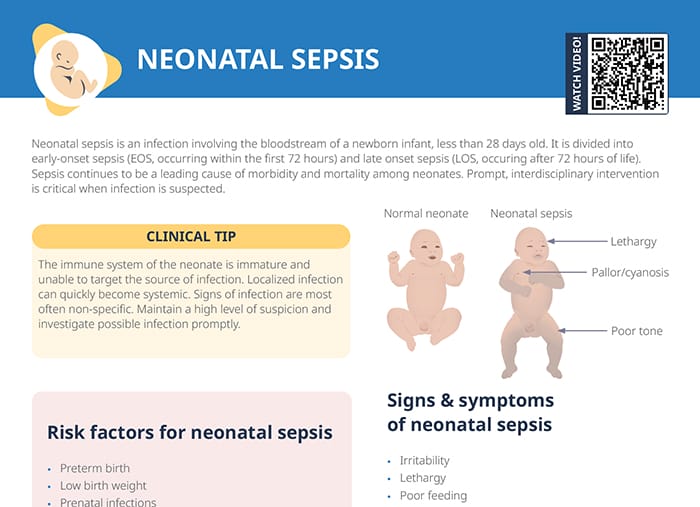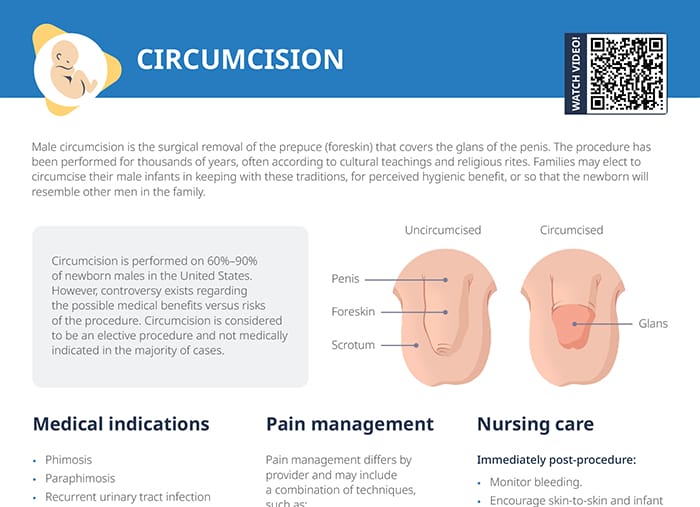Definition of male circumcision
Male circumcision is the surgical removal of the prepuce (foreskin) that covers the glans of the penis. The procedure has been performed for thousands of years, often according to cultural teachings and religious rites. Families may elect to circumcise their male infants in keeping with these traditions, for perceived hygienic benefit, or so that the newborn will resemble other men in the family.
Circumcision is performed on 60–90% of male newborns in the United States. However, controversy exists regarding the possible medical benefits versus risks of the procedure. Circumcision is considered to be an elective procedure and not medically indicated in the majority of cases.
Indications and contraindications
Medical indications
- Phimosis
- Paraphimosis
- Recurrent urinary tract infection
- Prevention of HIV in endemic settings
Contraindications
- Unhealthy infant
- Anatomic anomaly or pathology
- Bleeding disorders
- Failure to void
Possible complications
- Infection
- Injury to the glans of the penis
- Injury to the urethra
- Foreskin adhesions
- Phimosis
- Penile loss
Techniques of male circumcision
A variety of techniques are used and differ by provider. Families may utilize a medical provider or a trained practitioner from their cultural or religious community. Encourage parents to be aware of the technique their provider will use, the possible complications, and the specific post-procedure care needs.
Pain management
Pain management differs by provider and may include a combination of techniques, such as:
- Oral sucrose solution
- Topical analgesic such as lidocaine
- Injected lidocaine
- Penile nerve block
Plastibell circumcision
Plastibell circumcision is a newer technique involving a plastic ring placed over the glans, serving as a guide for the cut. The ring remains in place for a few days after the surgery.
Nursing care plan for circumcision
Care plan immediately post-procedure
Monitor bleeding and the infant’s ability to void. Encourage skin-to-skin contact and infant feeding for soothing and pain management.
Instruct the family to wash the area with water only and apply petroleum jelly generously to the tip of the penis to prevent healing tissue from adhering to the diaper.
Circumcision scar care
After the procedure, stay vigilant to signs of infection:
- Redness
- Swelling
- Pus drainage
- Increased pain/irritability
- Fever

